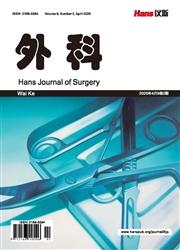Robotic versus Laparoscopic Partial Nephrectomy of Clinical Effect—A Meta-Analysis excluding Small Studies
引用次数: 0
Abstract
Context: Robotic partial nephrectomy (RPN) is rapidly increasing recently. Although it has some obvious advantages, the benefit of RPN over pure laparoscopic partial nephrectomy (LPN) is controversial. Objective: To evaluate and compare perioperative outcomes of RPN and LPN. Methods: We performed a literature search up to May 2018 including studies on large sample comparing robotic and laparoscopic partial nephrectomy and screened literatures according to inclusion and excluding criteria and extracted the data we needed. First we compared baseline data and tumor characteristics. And then we performed a Meta-analysis to evaluate safety, effectiveness and functional outcomes of robotic versus laparoscopic partial nephrectomy using mean difference (MD) and odd ratio (OR) respectively. Results: A total of 6371 patients were included from 23 studies. All studies were cohort studies with no randomization. Patients treated with robotic partial nephrectomy had a decreased likelihood of operative conversion (OR 0.28, P < 0.00001), any (Clavien 1 or greater) (OR 0.28, P = 0.003) and major (Clavien 3 or greater) (OR 0.63, P = 0.0008) complications, positive margins (PSM) (OR 0.60, P = 0.0003), and had shorter warm ischemia time (WIT) (MD −3.33, P = 0.0004), lower blood transfusion rate, shorter length of stay (LOS) (MD −0.38, P = 0.02), less estimated blood loss (EBL) (MD −44.75, P = 0.03). Both approaches had similar operative times (MD −12.07, P = 0.23) and postoperative change in estimated glomerular filtration rate (eGFR) (MD 0.49, P = 0.32). Conclusions: This updated Meta-analysis of cohort studies demonstrated that robotic partial nephrectomy confers a superior morbidity profile compared to laparoscopic partial nephrectomy in most of the examined perioperative outcomes.机器人与腹腔镜部分肾切除术的临床效果-排除小型研究的荟萃分析
背景:机器人部分肾切除术(RPN)近年来发展迅速。虽然RPN有一些明显的优点,但相对于纯腹腔镜部分肾切除术(LPN)的益处是有争议的。目的:比较RPN与LPN围手术期疗效。方法:我们检索截至2018年5月的文献,包括大样本比较机器人和腹腔镜部分肾切除术的研究,并根据纳入和排除标准筛选文献,提取我们需要的数据。首先,我们比较了基线数据和肿瘤特征。然后,我们分别使用平均差(MD)和奇比(OR)进行meta分析,评估机器人与腹腔镜部分肾切除术的安全性、有效性和功能结果。结果:23项研究共纳入6371例患者。所有的研究都是没有随机分组的队列研究。机械部分切除患者有一个减少的可能性的转换(或0.28,P < 0.00001),任何(Clavien 1或更高)(或0.28,P = 0.003)和主要(Clavien 3或更高)(或0.63,P = 0.0008)并发症,积极利润率(PSM)(或0.60,P = 0.0003),并缩短热缺血时间(智慧)(MD−3.33,P = 0.0004),降低输血率,缩短住院时间(LOS) (MD−0.38,P = 0.02),减少估计失血(EBL) (MD−44.75,P = 0.03)。两种方法的手术时间相似(MD = 12.07, P = 0.23),术后肾小球滤过率(eGFR)估计值变化(MD = 0.49, P = 0.32)。结论:这项更新的队列研究荟萃分析表明,在大多数检查的围手术期结果中,与腹腔镜部分肾切除术相比,机器人部分肾切除术具有更高的发病率。
本文章由计算机程序翻译,如有差异,请以英文原文为准。
求助全文
约1分钟内获得全文
求助全文

 求助内容:
求助内容: 应助结果提醒方式:
应助结果提醒方式:


